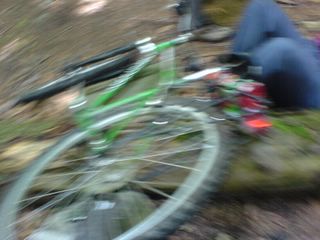I often put 'holds' on books at the library that don't come in for weeks. Sometimes I've forgotten what originally spurred me to ne omterested im a book. That's what happened with Califia's Daughters (and also Alanna: The First Adventure). It arrived, I picked it up, I looked at it, and it rang no bells. Why and when did I request this one? Oh well, up on the shelf it goes with the other thirty library books I'm hoarding.
Two weeks later, it's Memorial Day weekend and I need something to read on the exercise bike. I pick it up. And it's very good.
Califia's Daughters is about a valley of women building a life together in a post-apocalyptic 21st century world. Civilization's collapse involved engineered diseases with an affinity for the male genome, and men are rare and valuable. In 'the Valley' there are about twenty men to about 200 women. The women do the farmwork, the military work, and anything else the least bit strenuous. The men are guarded like precious little lambs and not allowed to do anything that might cause them to break a nail. It's well-drawn community.
Dian, the main character, is fiercely loyal to her family but has a wanderer's soul. She's the boss-lady in charge of secruity at the Valley which means she conducts martial arts classes and roams the hills with her big dogs. And one day she sees a vute little wagon train rolling along.
Is it an inoffensive group of traders? Or twenty women with machine guns? Surprise! Neither! It's strangers bearing gifts, in the form of two scrumptious looking men, one lega, one not. The catch is that they want to move in. Not just them, either, but they're 200 friends back home.
The book is divided roughly in two parts; first, the introduction to Dian and the Valley. Second, Dian's trip north to scope out the home base of the strange village and find out what deep dark secret they're revealing. That gives us a chance to see more of the territory (man, who'd have thought California would be a nicer place to live than Oregon) but it gives the book a schizophrenic feel. Several plot lines aren't really resolved.
On the upside, the author structures it very nicely after the ancient legend of the Amazons, and it moves along well. If you're willing to settle back and enjoy the ride without worrying about what's happening back home, it works well.
So I finish the book (sigh of contentment = good ending) and there's the author bio on the next page.
This is when I realize why I reserved the book.
Leigh Richards is Laurie R. King.
Why oh why do publishers play tricks with their readers? I ask you. I would have bought this book when it originally came out if I'd known it was by King. I would have done somersaults. Jumping jacks. Other miscellaneous exercises. A science fiction novel by my favorite mystery author? Bring it on!
Instead it was only by coincidence (probably browsing around the author website) that I ever heard of it.
Hey, I know, we're publishing a book by a New York Times best-selling author - let's pretend it's by someone else who doesn't have any publishing credits! That'll make it sell more copies!
Genius.
Subscribe to:
Post Comments (Atom)

1 comment:
There might be some stunt value in printing the "Richard Bachman" edition, then you can follow up with the "Stephen King writing as Richard Bachman" edition, and the first edition becomes a collector's item, and you generate a certain amount of discussion and newsprint about it all.
But I would guess that the motivation here was not to let a science fiction book sully the mystery brand.
Maybe she should have written it as Laurie R. M. King
Post a Comment